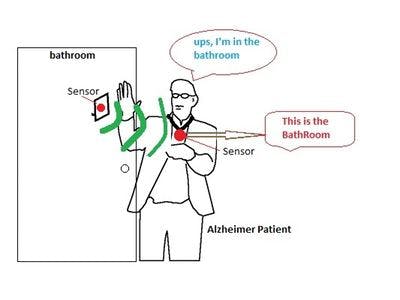What is Alzheimer’s disease?
Alzheimer’s disease (AD) is a progressive, degenerative brain disease that slowly erodes memory and thinking skills, and eventually even the ability to carry out simple tasks. It is the most common cause of dementia, accounting for approximately 50–70% of all cases of dementia. The incidence of AD rises exponentially with advancing age. Estimates vary, but experts suggest that as many as 5.1 million Americans may have Alzheimer’s. The greatest risk for Alzheimer’s disease is advancing age, with the risk increasing as we get older.
The major underlying mechanism of AD is the accumulation of proteins called beta-amyloid and tau within the brain. Although we still don’t know what starts the disease process, it can go on for many years without symptoms. This is called the preclinical or presymptomatic stage of the disease. As more and more beta-amyloid plaques and neurofibrillary tangles (aggregates of tau) form in particular brain areas, healthy neurons begin to work less efficiently, then lose their ability to function and communicate with each other, and eventually die. This process seems to begin in the parts of the brain responsible for forming new memories, in particular, the hippocampus and entorhinal cortex. The early symptomatic stage of AD is called mild cognitive impairment (MCI). As more neurons die, affected brain regions begin to shrink, leading to the functional problems, which are the signs and symptoms of Alzheimer's. By the final stage, damage is widespread and brain tissue has shrunk significantly.[1]
Usually appearing after the age of 60, the first symptom of AD is impaired memory formation, especially for recent events or newly learned information. Memory lapses may be very subtle at first, thus leading many people to discount the symptoms as a sign of getting old. A person may ask the same question or say the same thing repeatedly within a short period of time but without remembering the prior conversation. Important objects such as checkbooks or wallets may be misplaced and lost. In the kitchen, pots can be left on the stove resulting in burnt food or small fires.[2]
[1] www.http://memory.ucsf.edu/education/diseases/alzheimer (first info)
[2] www.http://memory.ucsf.edu/education/diseases/alzheimer (three info)
This project is intended to help people diagnosed with Alzheimer's disease and problems associated with this disease (dementia) to improve their quality of life through devices to the Guide to the interior of their homes, apartments, homes for care of the elderly, etc. The purpose focuses mainly in that the patient may be more self-reliant in the activities more everyday. Although the disease is progressively degenerative, it is important that while the patient can be attended by guidance devices, that will help you improve your quality of life.
What You'll Need
Parts:
1. MKR1000 , Arduino Uno and standard A/B USB cable
2. KY-005 Infrared Transmitter
3. KY-022 Infrared Receiver
5. LiPo Battery
6.- Male-male and male-female jumper wires
7.- Wireless Conection Available (know SSID and PASSW)
8.- Azure Suscription
Project Instructions
Device Name - Location Master (Device that the patient must use - MKR1000 )
Step 1: Solder Infrared Receiver to a MKR1000 (using jumper wires)
Time: 5 minutes
Parts: MKR1000, Infrares Receiver, 2 jumper wires male-female.
Tools: Soldering Iron, Soldering Wire
Description :
Solder jumper black wire male-female to GND -> MKR1000
Solder jumper green wire male-female to Pin 6 -> MKR1000
Solder jumper blue wire male-female to Pin 5V -> MKR1000
Solder the Pin (KY-022) (-) to jumper black
Solder the Pin (KY-022) (S) to jumper green
Solder the Pin (KY-022) (middle pin) to jumper blue
Note : Not expose too long the welder to pins IR Receiver
Step 2: Connect IR Transmitted to Arduino
Time: 5 minutes
Parts: Arduino Uno, jumper wires, IR Transmitted
Tools: N/A
In this project , we use KY-005 as the component to send the signal code IR (identifying the physical location ) to communicate with MKR1000 .
Each room (bathroom, kitchen, etc ) requires a unique code IR .
Description :
Connect jumper black wire male-female to GND -> Arduino Uno
Connect jumper blue wire male-female to Pin 8 -> Arduino Uno



Comments
Please log in or sign up to comment.